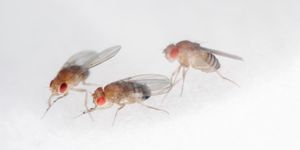Why Some Cancer Cells Are Drug Resistant?
Cancer is one of the most prominent diseases in the world. It takes many lives every year and treatment likely faces drug-resistance. In a study published in Nature, a phenomenon known as "chromothripsis" works by breaking up chromosomes and then reassemble in ways that support cancer cell growth.
"These rearrangements can occur in a single step," said first author Ofer Shoshani, PhD, a postdoctoral fellow in the lab of the paper's co-senior author Don Cleveland, PhD, professor of medicine, neurosciences and cellular and molecular medicine at UC San Diego School of Medicine.
"During chromothripsis, a chromosome in a cell is shattered into many pieces, hundreds in some cases, followed by reassembly in a shuffled order. Some pieces get lost while others persist as extra-chromosomal DNA (ecDNA). Some of these ecDNA elements promote cancer cell growth and form minute-sized chromosomes called 'double minutes.'
The mutational events caused by chromothripsis gives cancer cells the ability to evade therapeutics.
Learn more about chromosomal biology:
"Chromothripsis converts intra-chromosomal amplifications (internal) into extra-chromosomal (external) amplifications and that amplified ecDNA can then reintegrate into chromosomal locations in response to DNA damage from chemotherapy or radiotherapy," said Shoshani. "The new work highlights the role of chromothripsis at all critical stages in the life cycle of amplified DNA in cancer cells, explaining how cancer cells can become more aggressive or drug-resistant."
Source: Science Daily









